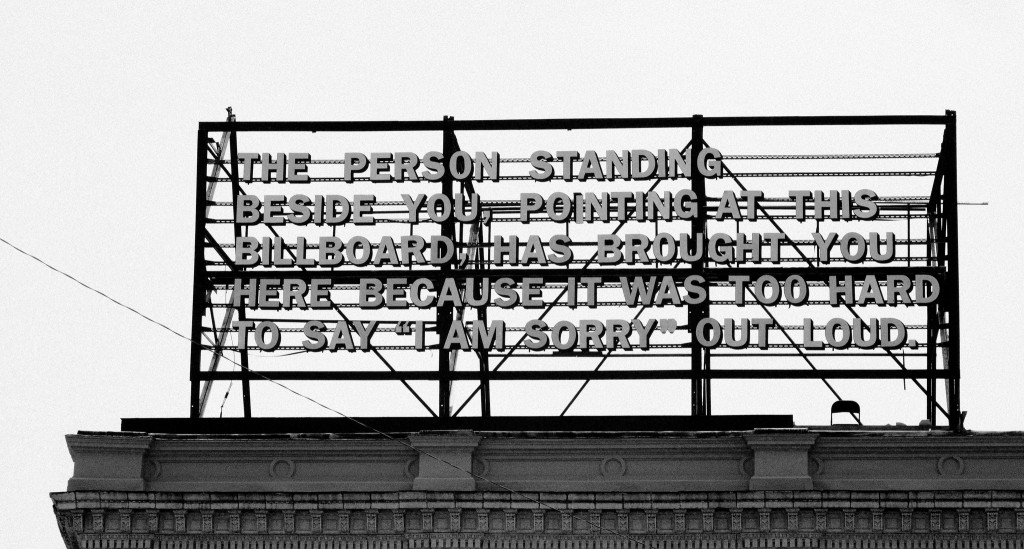How to apologise
We often think about ethics as an attempt to answer the question: “What ought I to do?” But as philosopher Margaret Walker points out “One of our recurrent ethical tasks is better suggested by the question ‘What ought I – or better we – to do now?’ after someone has blotted or torn the page by doing something wrong.” (Moral Repair p.6)
When we’ve ‘blotted or torn the page’ in health care, apologies are one of the few tools available to help with ‘moral repair’. This post for anyone who sincerely (that is important) wants to apologise well. It is about the principles that underpin apologising, based on my own research and practice and on Nick Smith’s excellent book I Was Wrong – The Meanings of Apologies. This is a long post, because the topic deserves it. But it is still only scratching the surface of the subject. If you’d like me to come and facilitate a deeper discussion about apology – and other aspects of moral repair – with you and your colleagues, feel free to get in touch.
What’s the point of an apology?
An apology is an imperfect response to the fact that we can never turn back the clock when things have gone wrong. We just have to deal with what is, and deal with it as well as we can.
The very worst medical harm may take away a life, finally and irrevocably. Where a body or mind has been damaged by less grave harm it may be possible to repair the harm, but the original damage still remains. And neither can we turn back the clock on the relationship that formerly existed between the caregiver and the care receiver. I had confidence in you, I had trusted you, and I had hoped that all would turn out well. I now have to come to terms with the fact that you have let me down. As a healthcare professional, it is hard to admit that you let someone down. Believe me, it can be even harder for patients or carers to admit that someone they relied on let them down.
At their best, apologies can help to rebuild confidence, repair trust, and restore hope. But we are asking a lot of apologies. Now that apologising has been mandated in law for healthcare harms of moderate severity or worse, it has become even more important to apologise well. There is a real risk that the healing power of a genuine apology will be undermined by bureaucratisation and cynicism.
Apologies help restore confidence, trust and hope
One way of thinking about morality is that it brings each of us freedom from the fear that others will harm us. When we live in moral relationships with others, we have to have confidence that we agree upon important shared standards; we trust that others will be guided by these standards; and we live with a renewable hopefulness that our interactions with others will be based on these shared values. If this all sounds very theoretical, think for a moment about what happened at the Mid-Staffordshire hospital. Families lost confidence, trust, and hope that loved ones would be cared for in accordance with what they thought were shared standards.
Ultimately the point of an apology is to help us along the way to restoring confidence, trust and hope. But simply saying “sorry” cannot do this. Let’s consider an example given by Archbishop Desmond Tutu : “If you take my pen and say you are sorry, but don’t give me the pen back, nothing has happened”. (Cited in Nancy Berlinger After Harm p.61) The ‘something’ that needs to happen is a gesture that proves we do share the same standards, I can trust you, and I can be hopeful you won’t take my pen again.
If I am still gripping your pen, the most convincing way I can make amends it is to give it back. In circumstances where giving something back is not possible – if I have harmed your body for example – I will need to find other ways to demonstrate my good faith. I have to give you some credible evidence that I am committed to living by shared standards, that you can rely on me in future, and that you are not foolish to be hopeful. This is where a comprehensive apology – what Nick Smith calls a categorical apology – comes in.
Before we examine what a full categorical apology looks like, we need to deal quickly with the idea of a partial apology.
The difference between a partial and a full apology
An apology is partly a statement of regret, and partly an acceptance of responsibility for things that have gone wrong. A sincere partial apology (“I’m truly sorry that this has happened”) is a statement of sorrow or regret. It meets the immediate need for an emotional connection when someone has done wrong, and it may signal that they will be doing more to make amends in future. But that is as far as it goes. A full apology, by contrast, will include an explanation of what happened and acceptance of responsibility. (This is the ‘categorical apology’ I describe below.) We have all heard insincere partial apologies – “I’m sorry you see it that way” – and if someone believes a wrong has been done to them, trying to pass that off as an ‘apology’ merely adds insult to injury.
At the stage of an initial disclosure of serious healthcare harm, the full facts may not be known. If this is the case, the best that can be offered is a statement of regret performed with genuine feeling. This may suffice temporarily. However, a full explanation, and therefore a fuller apology, will be needed when investigations have been concluded.
A categorical apology.
“Apologies can anchor our moral lives, promising that our actions never drift too far from our values.” (Nick Smith, I Was Wrong – The Meanings of Apologies) I have summarised Smith’s richly illustrated argument, listing eleven components that contribute to a categorical apology.
- Aim your apology at what actually happened. An apology is for a specific wrong or injury. It will miss its mark if the apologiser and the apologisee disagree about what went wrong. This means understanding what happened from the point of view of the patient or their supporters, as well as seeing events from your own point of view.
- Accept responsibility. We expect apologies when we believe someone could have prevented the harm occurring. (Philosophers refer to this as moral agency.) There is no point offering an apology in which you deny responsibility. Of course, responsibility could be quite widely dispersed across a system. In this case “We let you down” or “Our systems let you down” is a way of recognising that the organisation had a responsibility to do better. It probably helps that the duty of candour focuses on the need to disclose unintended harm. In such cases, you will be taking responsibility for the fact that harm has occurred, rather than directing blame for a mistake.
- Be the right person. If an apology is about accepting responsibility, it follows that the apology has to come from a person who can credibly take responsibility. Sometimes this is the Chief Executive. In other circumstances it might be better coming from the Consultant in charge of someone’s care.
- Identify each harm. When you have established what actually happened you need to be clear about the specific harm for which you are apologising: “You developed a pressure ulcer, and we know you have experienced pain and inconvenience as a result. You also told us that you were anxious you might never fully recover”.
- Identify and endorse the moral principles underlying each harm. Remember that an apology is seeking to restore confidence that you and the recipient are committed to similar moral standards: “You trusted us to keep you safe while you were in our care, and you are right to expect that of us.”
- Recognise the apologisee as your moral equal. When things go wrong, it can leave victims with the feeling that they somehow count for less – maybe in your eyes, maybe in the eyes of the world, maybe in their own eyes. An apology needs to restore a sense of moral equality, conveying to the victim that they themselves truly matter to you. This element could be expressed as “I hope you feel we have listened to you, and have truly understood your concerns; if not, we want to know what we have missed”.
- Convey genuine regret. Why is it important to express remorse? Recall Archbishop Tutu’s example of refusing to give the pen back. Saying sorry is not enough, unless something more happens. In circumstances where the damage cannot be repaired, sadness, regret, or remorse are ‘something more’, painful feelings which perhaps mirror the pain of the victim’s loss. Remorse also helps the process of restoring confidence and trust, because we tend to view it as a signal that someone is less likely to do the same thing in future. But see point 9 below, on the importance of providing redress. Remorse alone may not be enough.
- Communicate the apology in an appropriate way. Apologies may happen face-to-face, in a private letter, a public verbal statement, or a public written statement. Each of these has its own unique requirements, but there are some common principles. Verbal apologies are an opportunity to convey real feelings that can be hard to get across in a letter. You may anticipate them with dread, but all of my experience is that when people want an apology, and get it, rich conversations follow. Written apologies should be free of jargon and management speak, factually correct, simply written, and free of spelling or typographical errors. They should also get people’s names right.
- Provide redress. Redress is the equivalent of giving Archbishop Tutu his pen back. It is the assurance that something has happened, security against further harm. Redress therefore includes organisational action to prevent the harm recurring. In some instances, there will be the possibility of financial compensation. If someone asks whether they are entitled to compensation, withholding information would, in my view, undermine the apology. Many Trusts refer patients either to reputable legal advisors or organisations such as AvMA for advice.
- Communicate an appropriate intent. Apologies are easily dismissed as bogus when they are offered simply to ‘cover your back’. This presents something of a dilemma in relation to the statutory duty of candour, which mandates apology. The way to manage this, I suggest, is to focus resolutely on the needs of the person who has been harmed. Remember that you are apologising for a noble moral purpose – to restore confidence, trust and hope – and not just to satisfy the CQC.
- Communicate appropriate emotion. Explaining the importance of emotion, Smith quotes from a letter sent to the New York Times in response to one of its articles: “One of the reasons that my ex-husband is my ex is because he found it easy to say ‘I was wrong’ but next to impossible to say ‘I’m sorry’. The former is an intellectual acknowledgement of error, but the latter shows remorse and empathy for a fellow human being”. (Smith p.100) Judging what emotion is appropriate in an apology for healthcare harm is difficult, all the more so if we do not talk seriously about the art form that is the apology. The emotions that count in an apology are those that arise out of empathy for an injured patient, not those that arise out of the professional’s concern for herself. An apology should not be an attempt to elicit the patient’s sympathy. On the other hand, emotional honesty is generally highly-prized. It would be odd if this were not so in the realm of apology for medical injury.
A note on the law
The law in England and Wales states that an “apology, an offer of treatment or other redress, shall not of itself amount to an admission of negligence or breach of statutory duty”. (Compensation Act 2006, s.2) There has been some debate among legal scholars whether it is a partial apology (a statement of regret) or a full apology (an acceptance of responsibility) that is being protected. Since the statutory duty of candour now requires you to give a full explanation of what has happened, as well as to apologise, this legal nicety may not be terribly important. As an ethicist, I would say that the right thing to do is to give a proper, full apology when that is warranted, and accept whatever legal consequences follow. After all, if a patient is entitled to compensation why contest it?
One last thing
Smith rightly cautions about seeing apology as the end of a process. It might be just the beginning.
Good reads
Nancy Berlinger After Harm
Margaret Walker Moral Repair – Reconstructing Moral Relations After Wrongdoing








